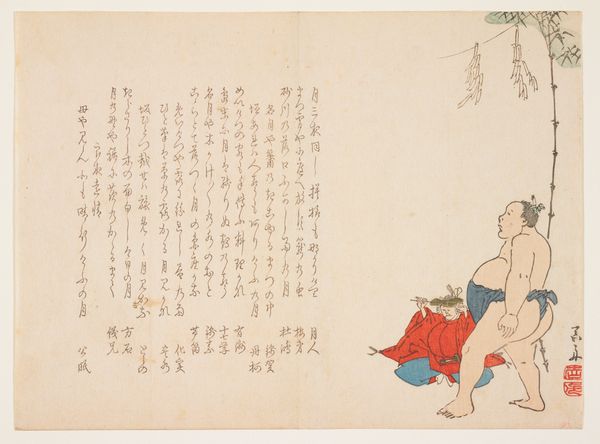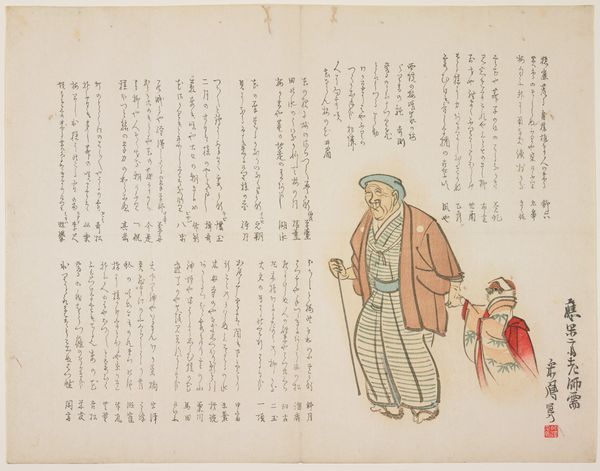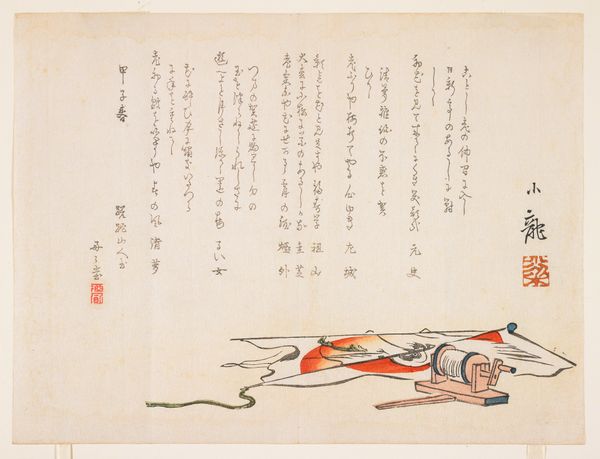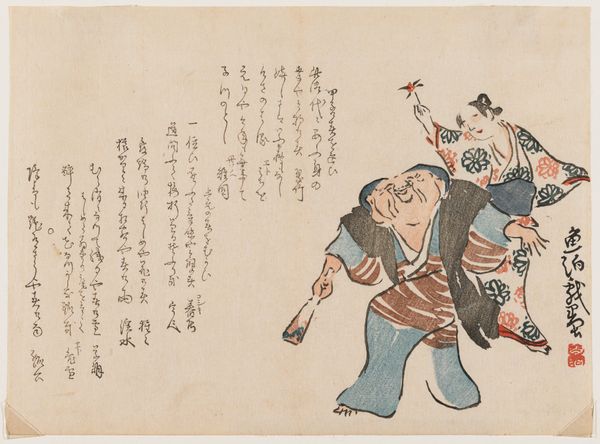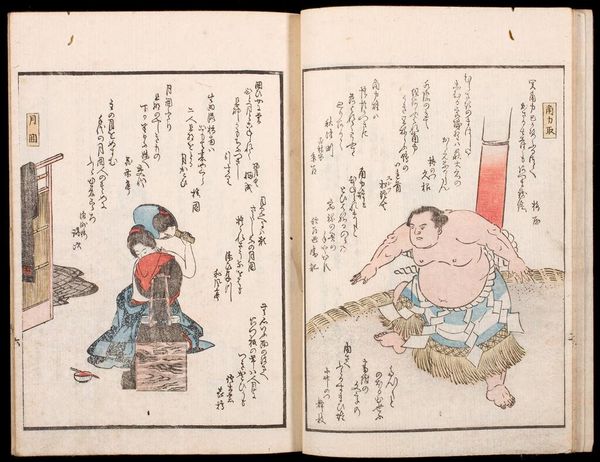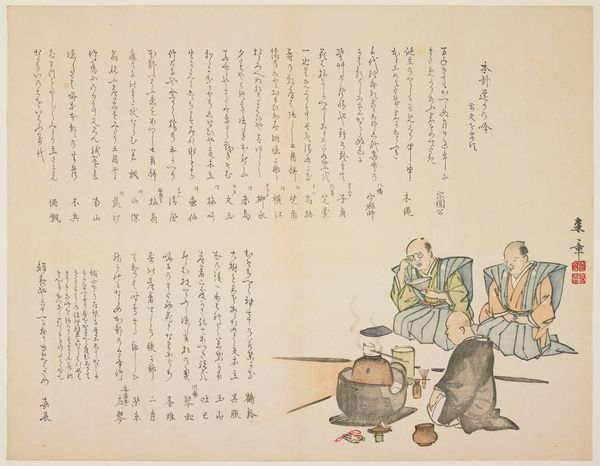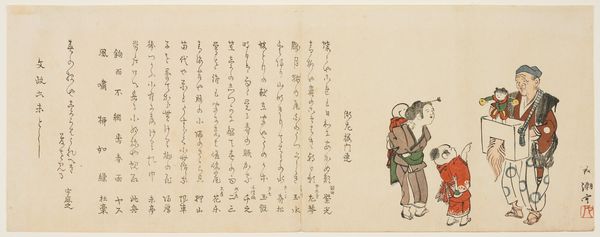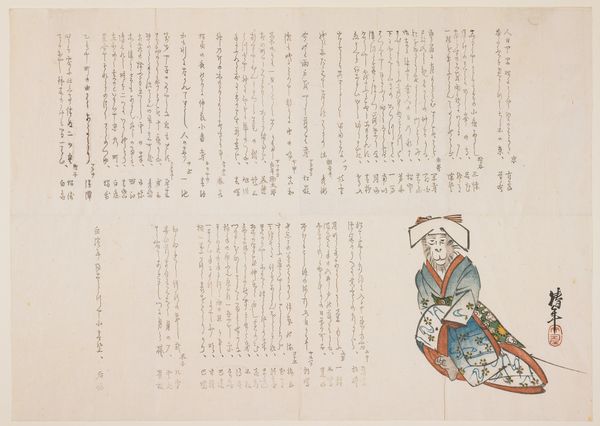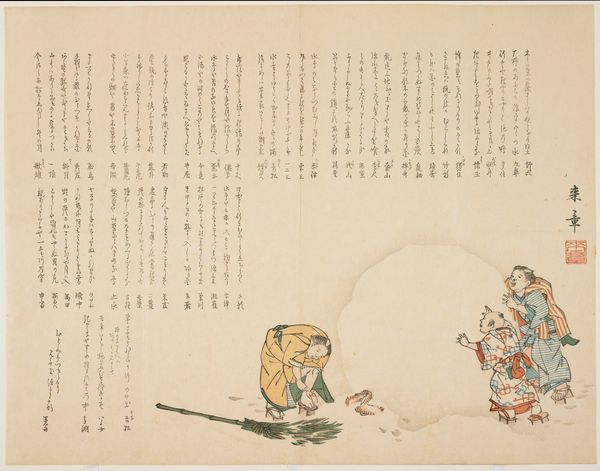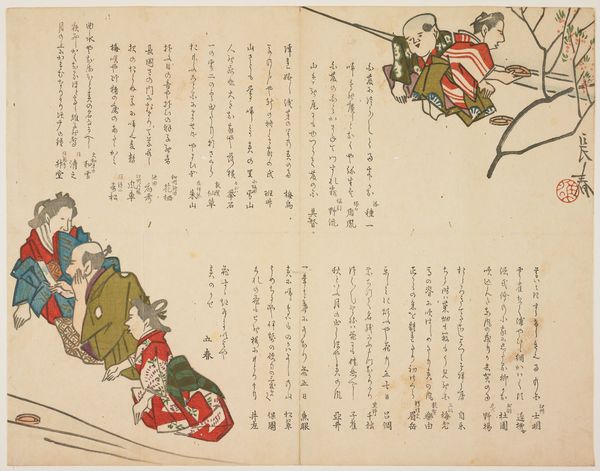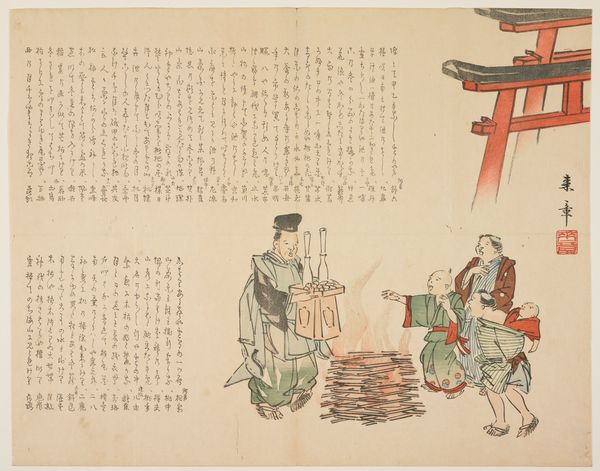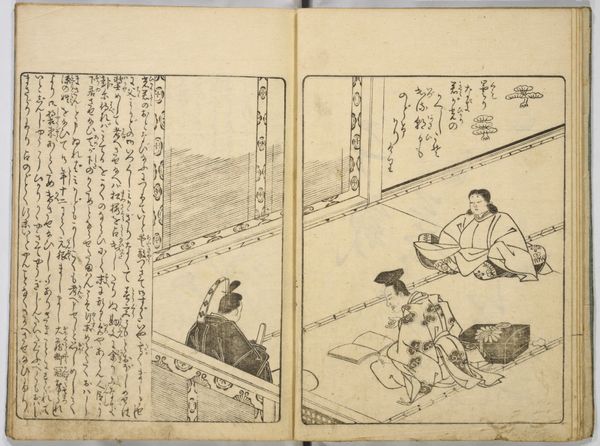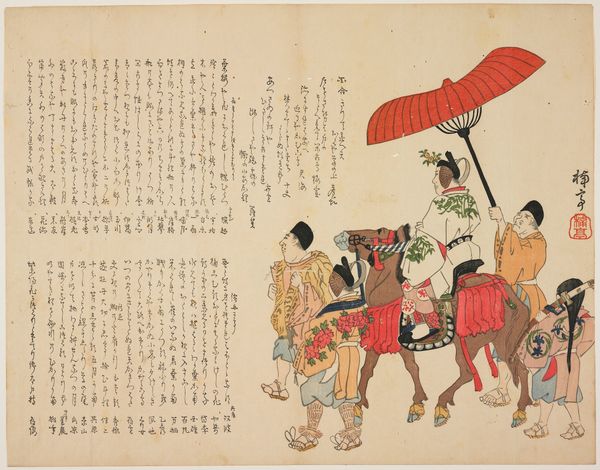
print, ink
#
narrative-art
# print
#
ukiyo-e
#
figuration
#
ink
#
orientalism
Dimensions: 15 x 19 1/4 in. (38.1 x 48.9 cm) (image, sheet)
Copyright: Public Domain
Nakajima Raishō created this print titled "Three Sumo Wrestlers" in 19th century Japan. During the Edo period, sumo wrestling was not just a sport, but a cultural spectacle deeply intertwined with social hierarchies. Raishō’s portrayal invites us to consider the wrestlers' complex identities. Their bodies, marked by size and strength, challenge conventional beauty standards and reflect the physical demands of their profession. Note how the composition captures a fleeting moment of camaraderie, offering a glimpse into the intimate world of these athletes. The text accompanying the image is also important, hinting at the broader cultural context and perhaps offering commentary on the wrestlers' status or performance. What does it mean to see these figures celebrated in art, yet also subjected to public scrutiny and expectation? Raishō encourages us to consider the multifaceted lives of these athletes and the society that both reveres and judges them.
Comments
minneapolisinstituteofart about 2 years ago
⋮
Since all the poems included in this print refer to things associated with autumn, it must have commemorated a sumo match held that season. The large wrestler is getting dressed in a red and white ceremonial apron, which is worn for a ritual performed by ranking wrestlers before the day's bouts begin. Another wrestler of lower rank helps him secure the apron. Wrestlers are ranked by their achievements in a tournament and could lose their rank if they underperform.
Join the conversation
Join millions of artists and users on Artera today and experience the ultimate creative platform.
